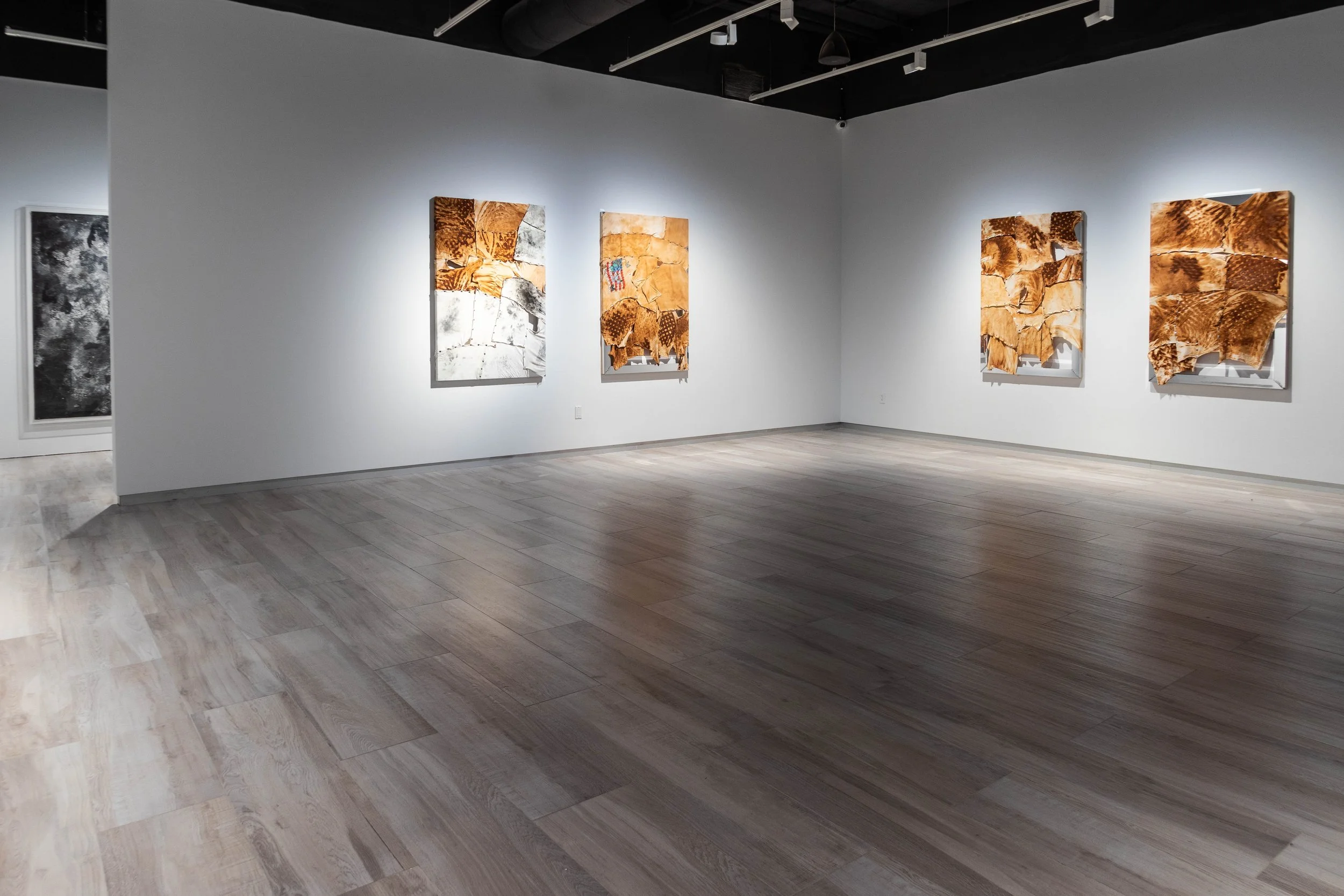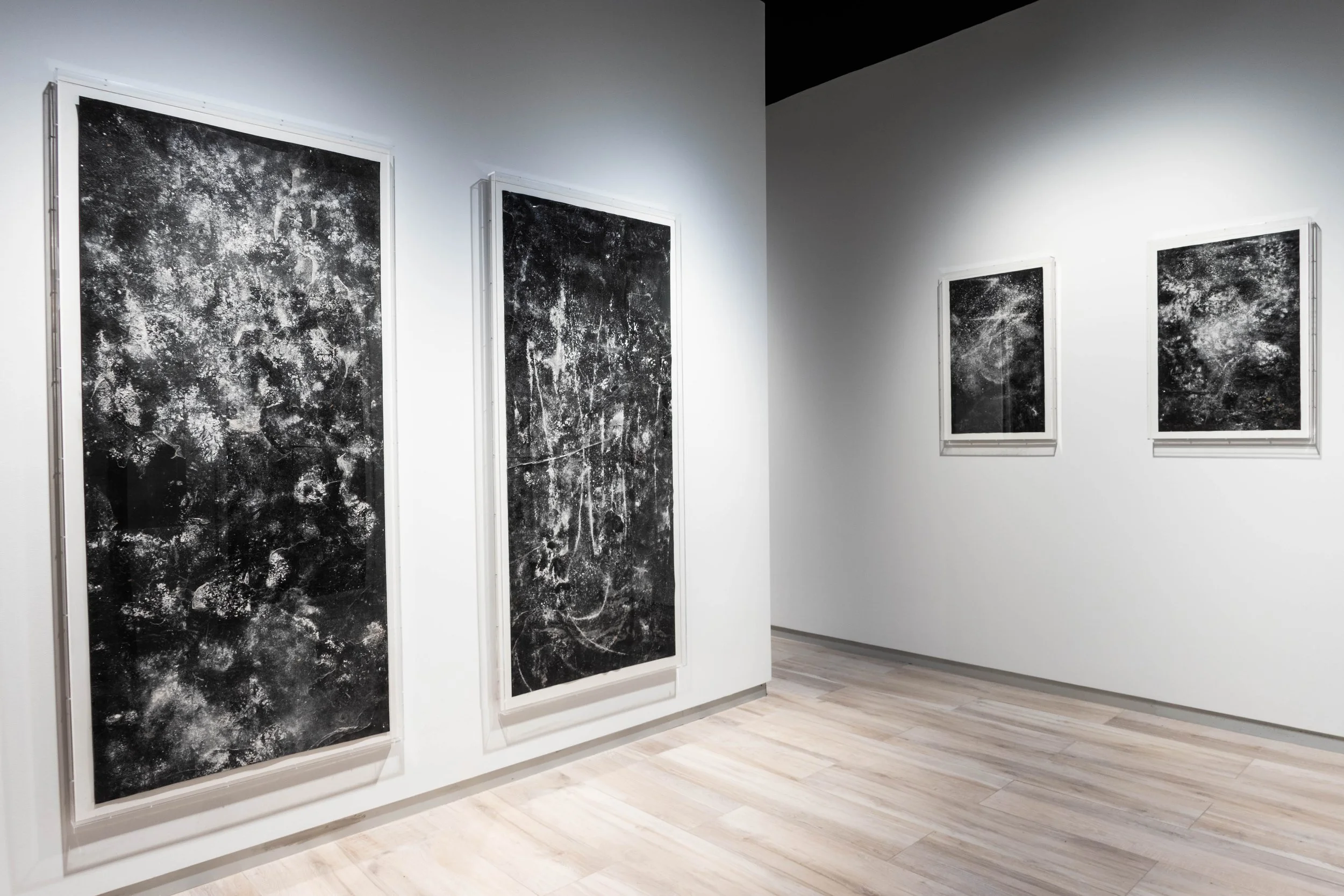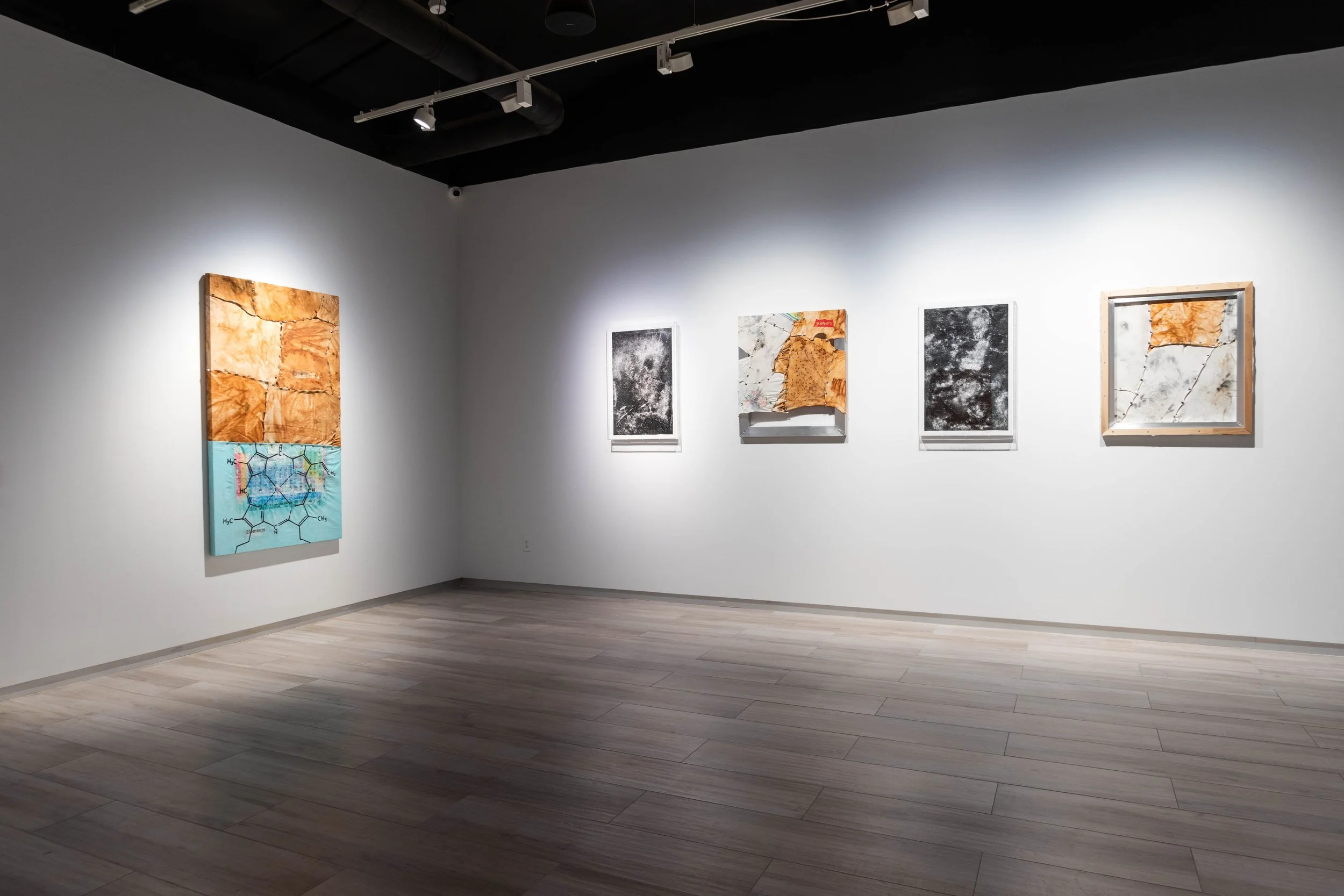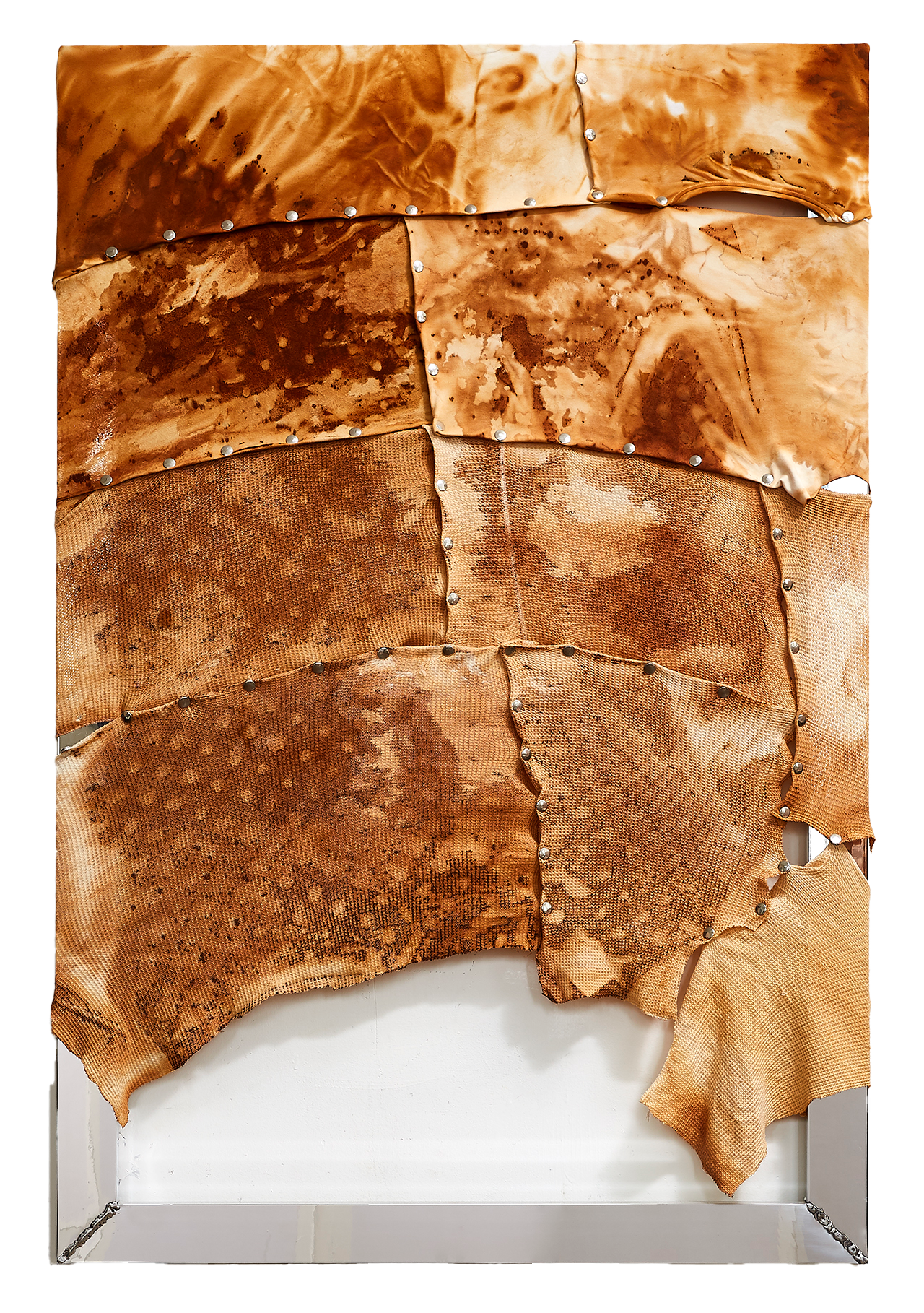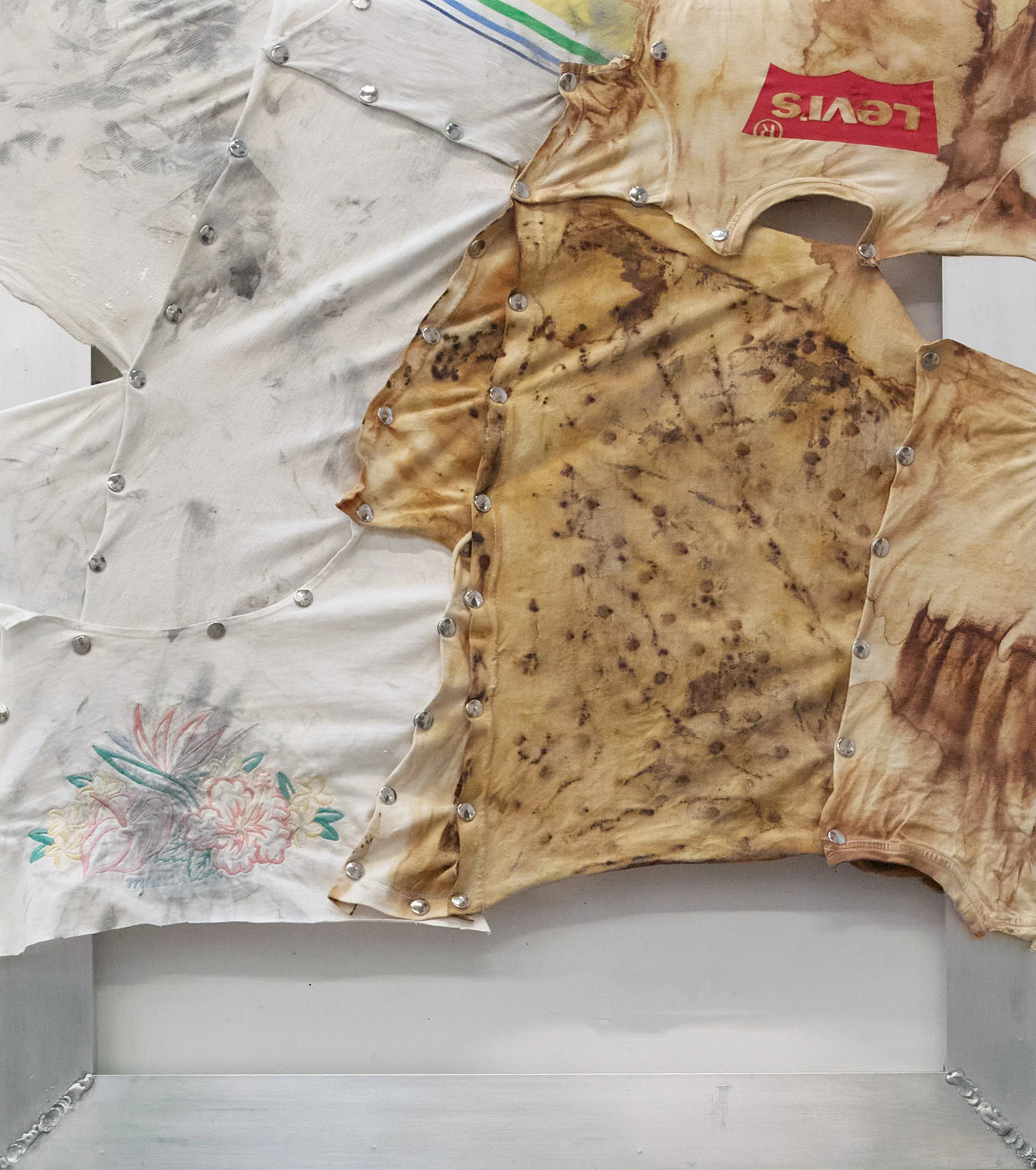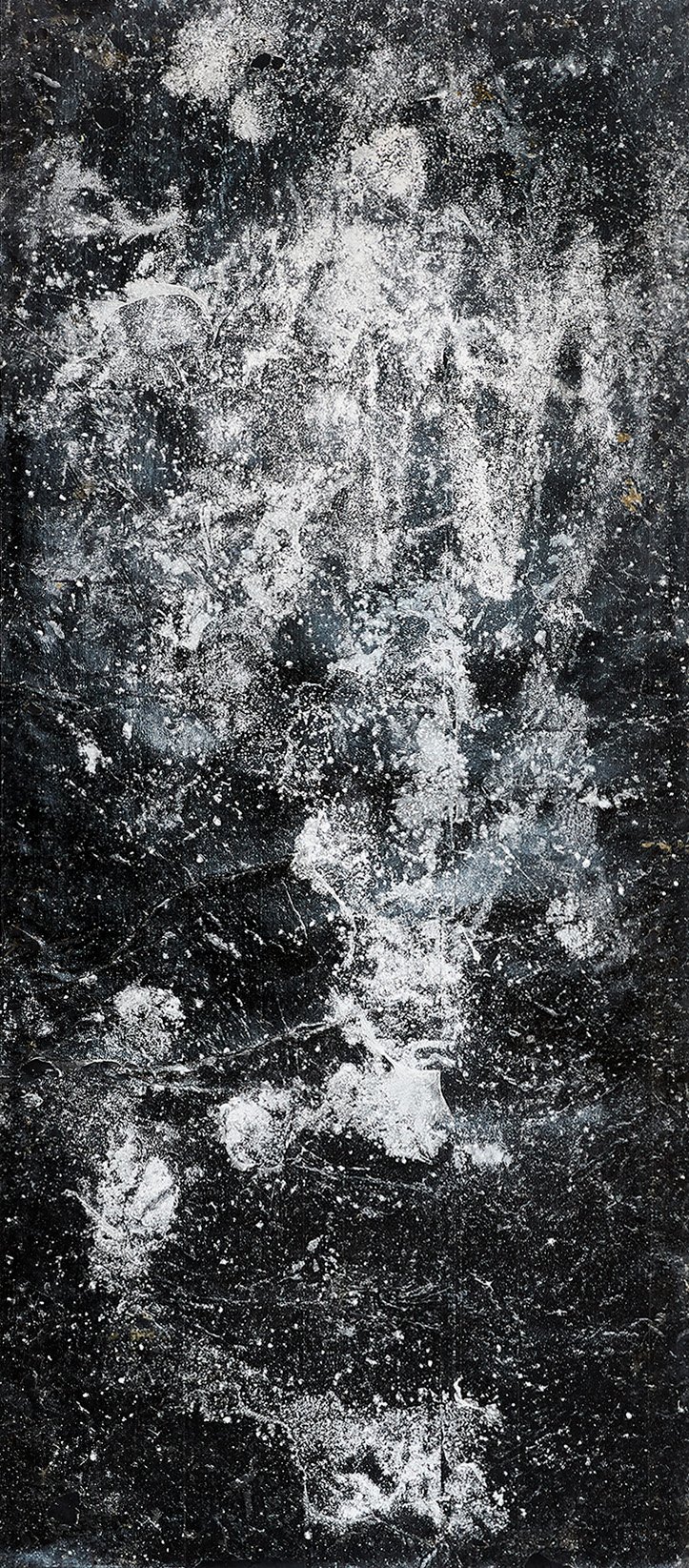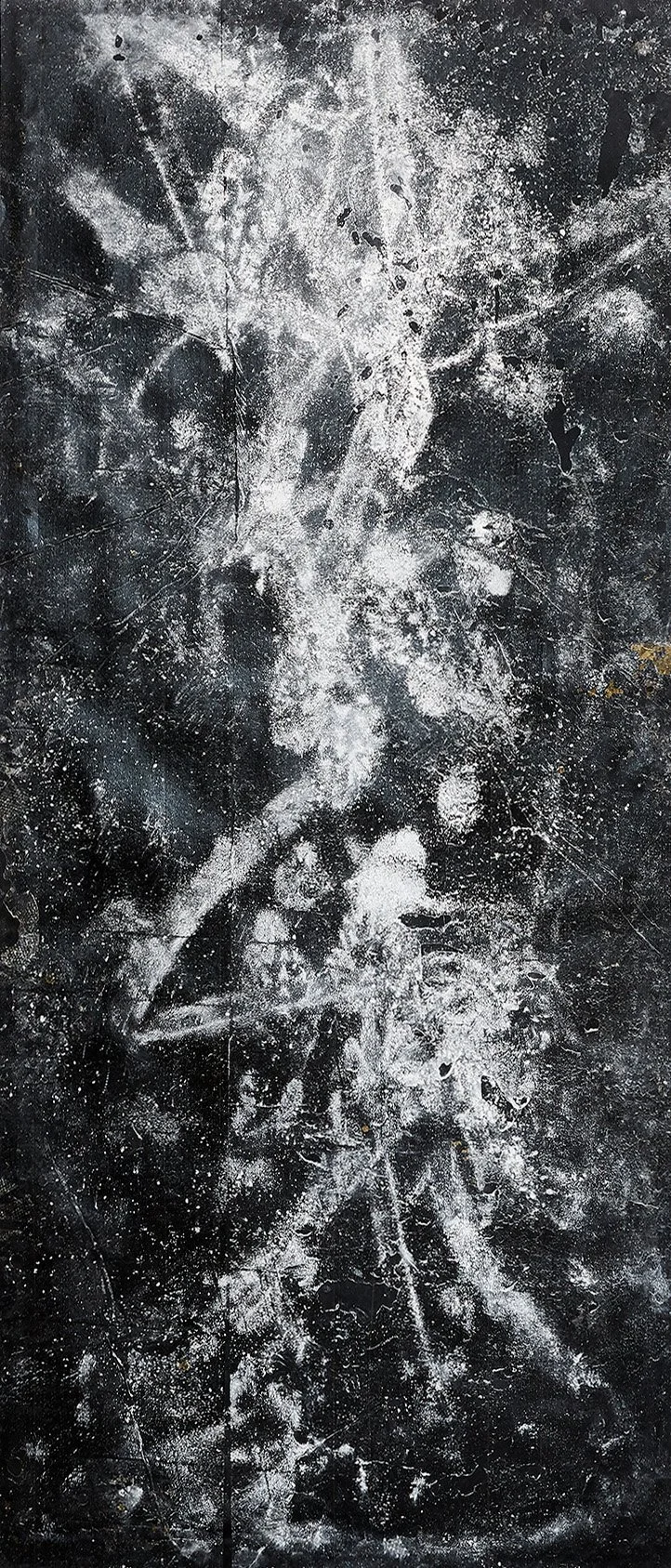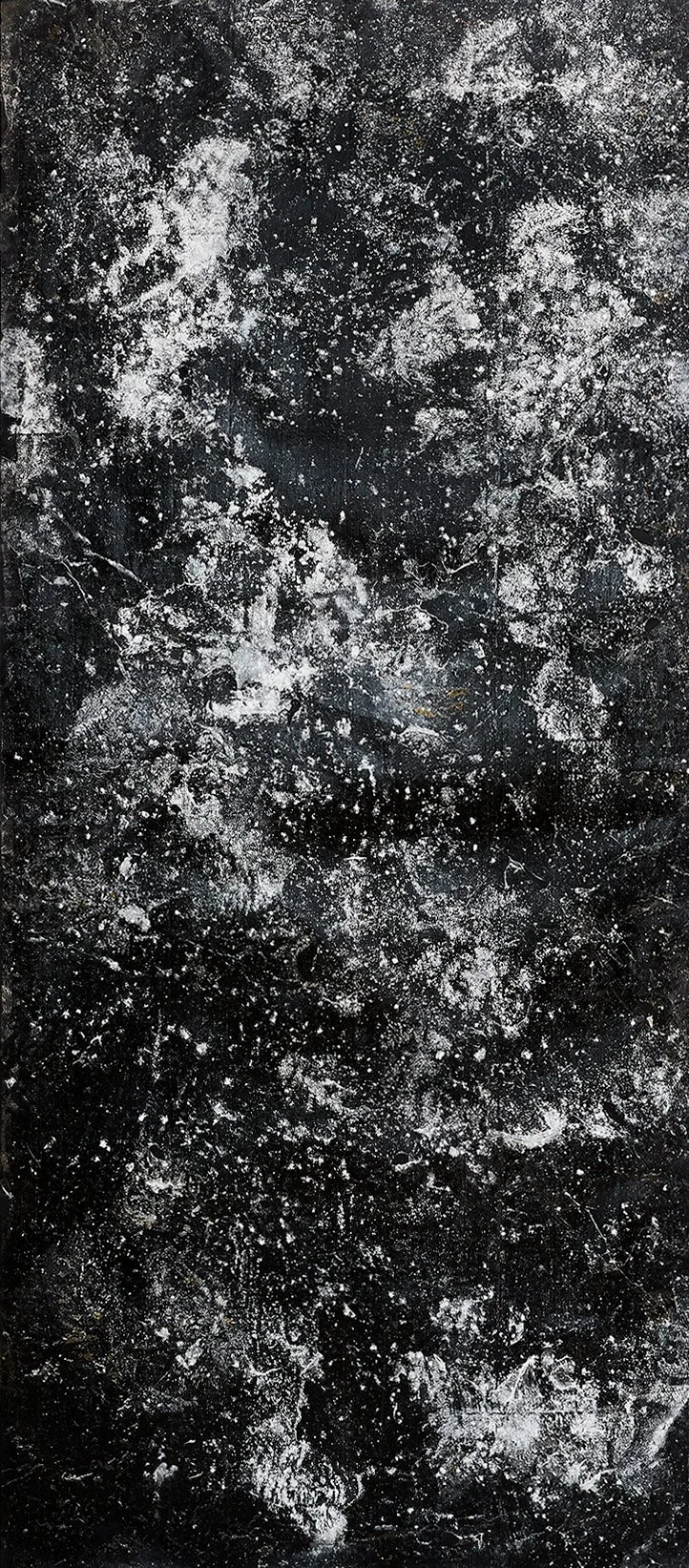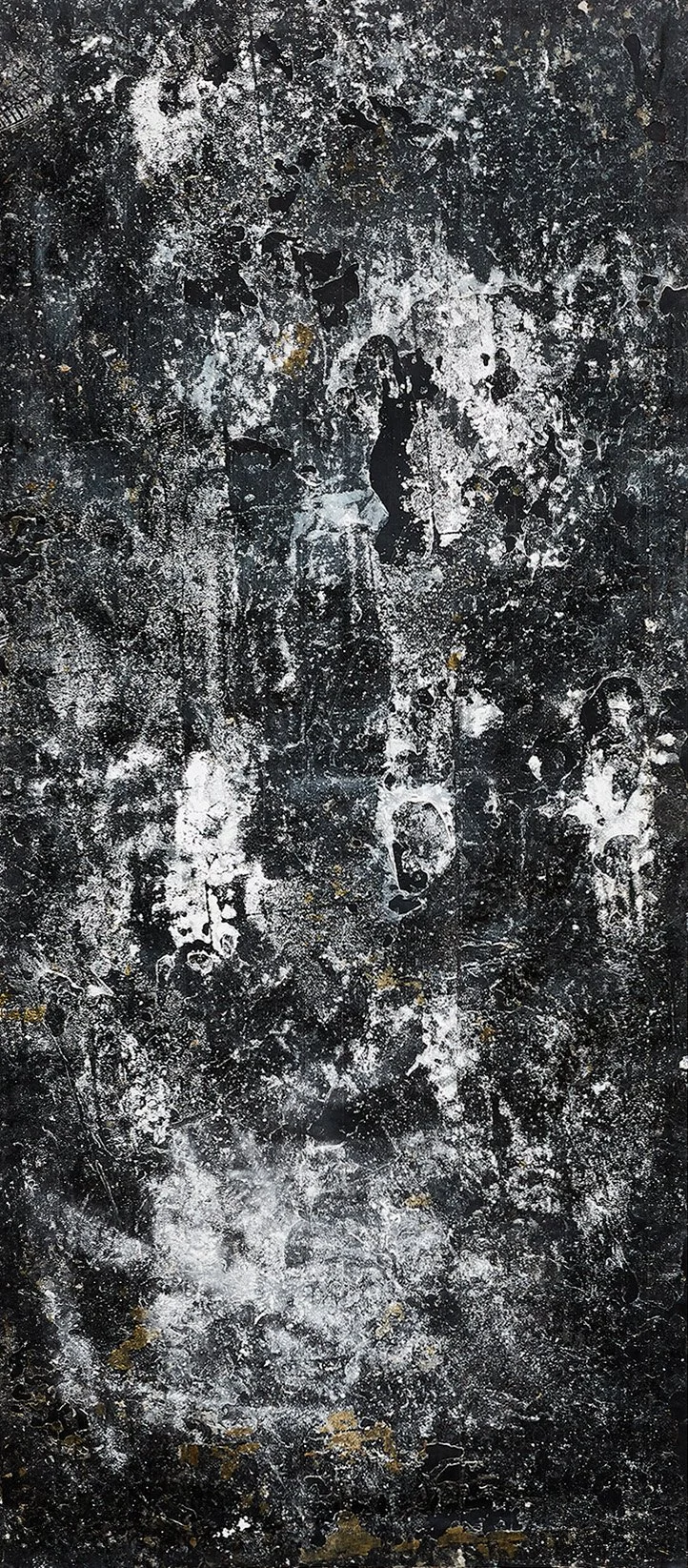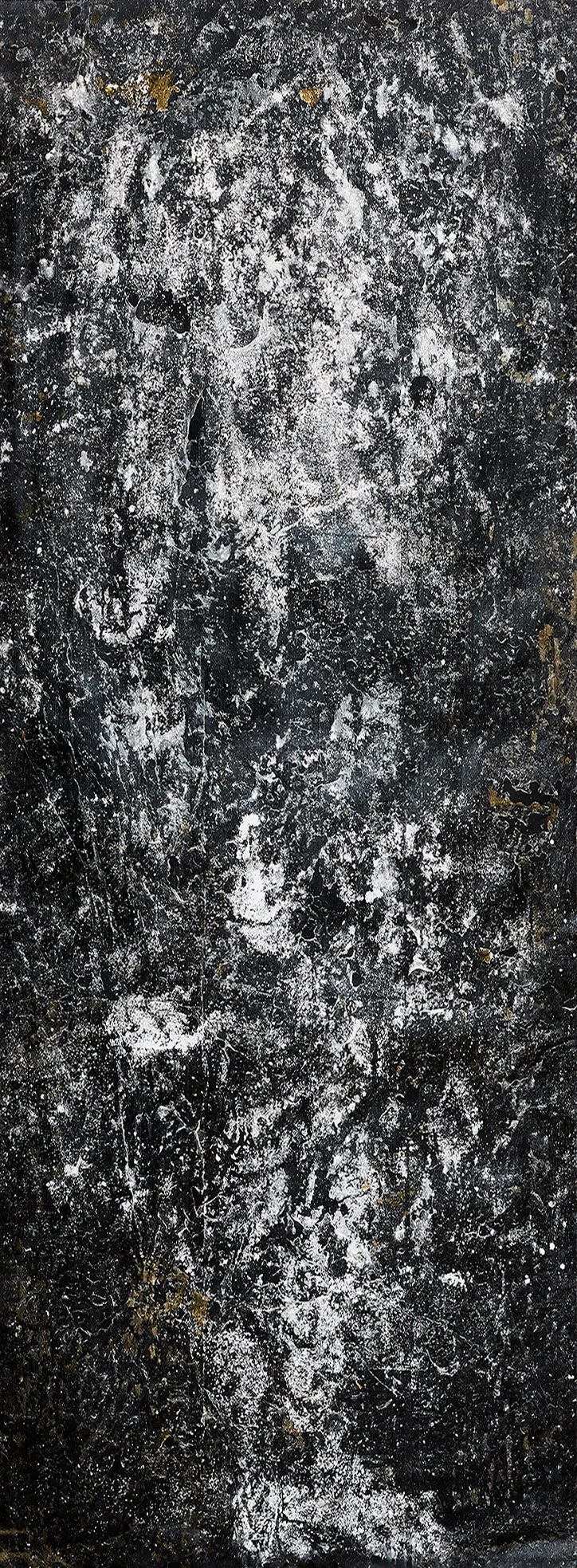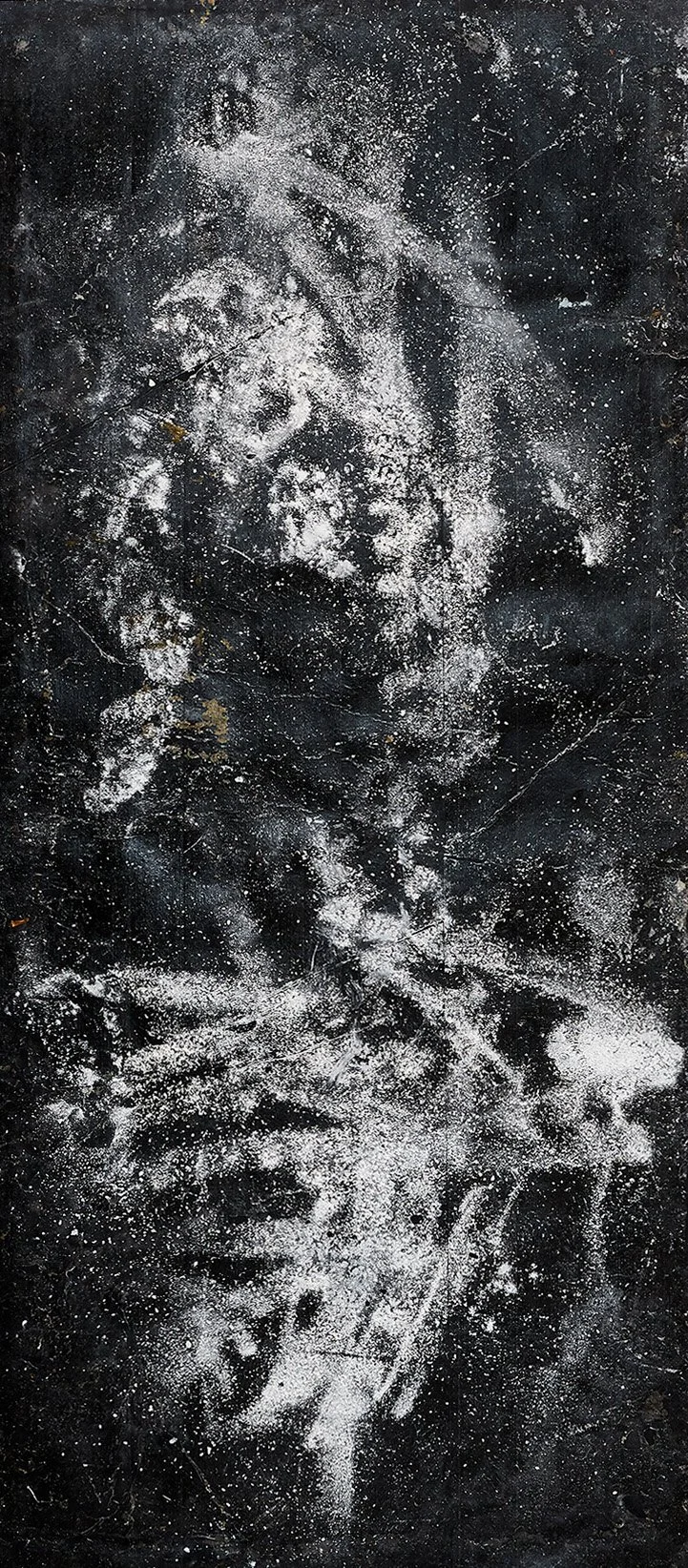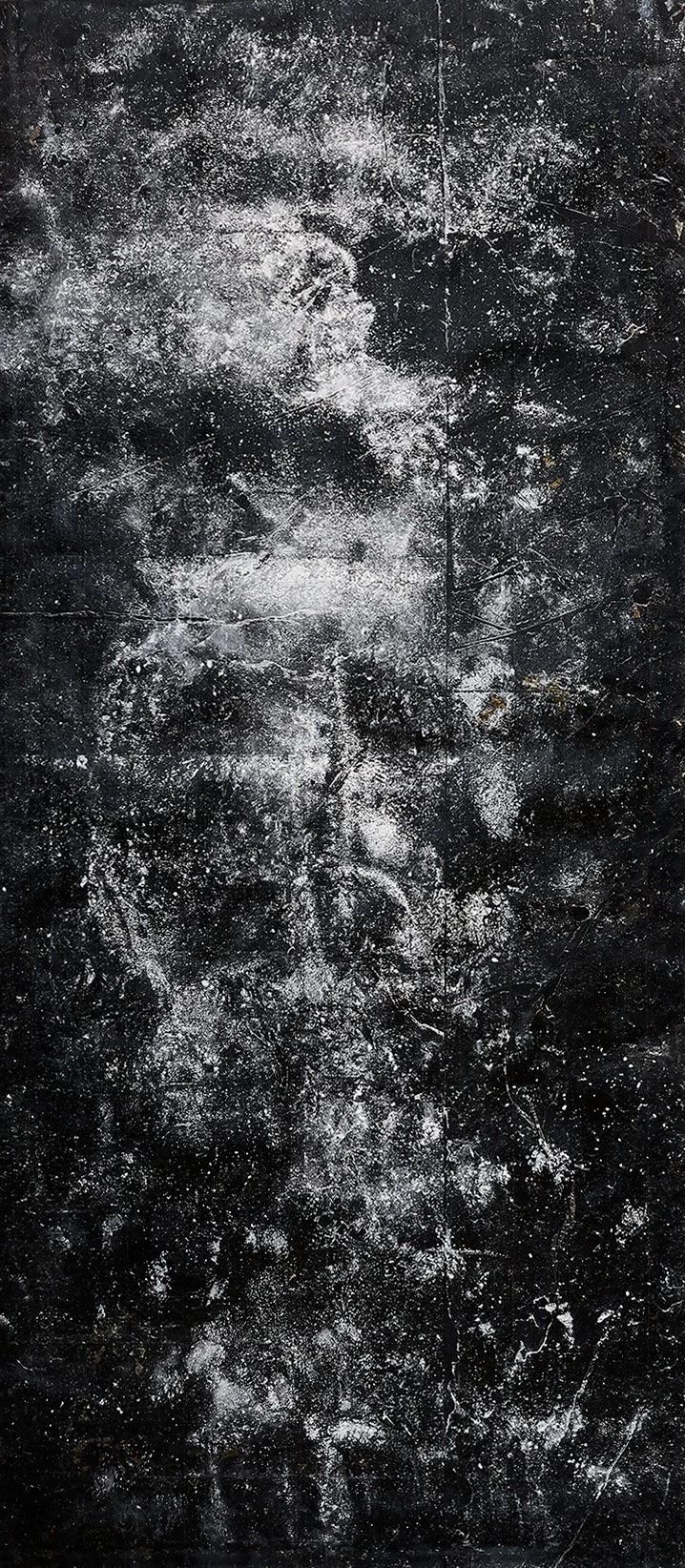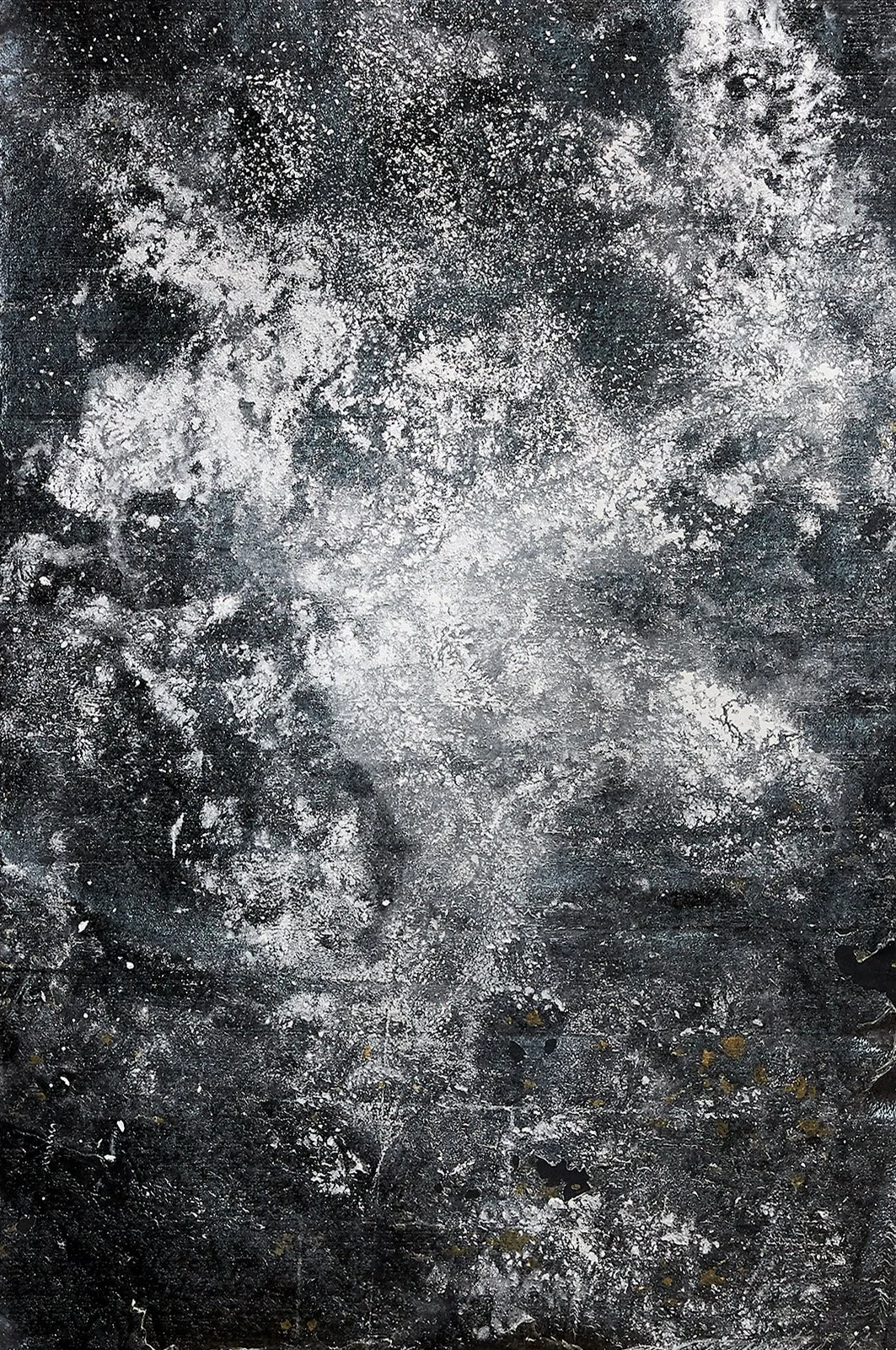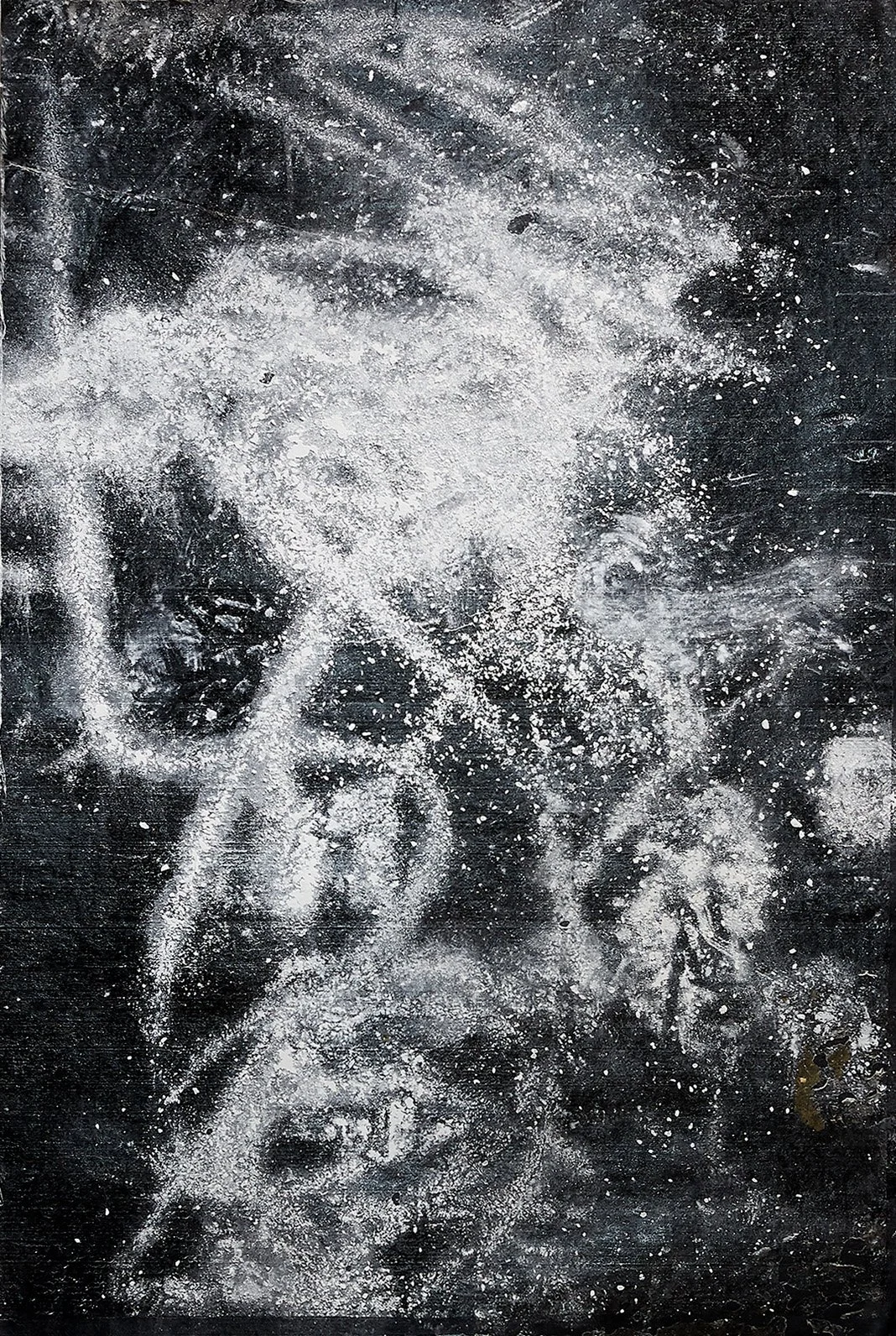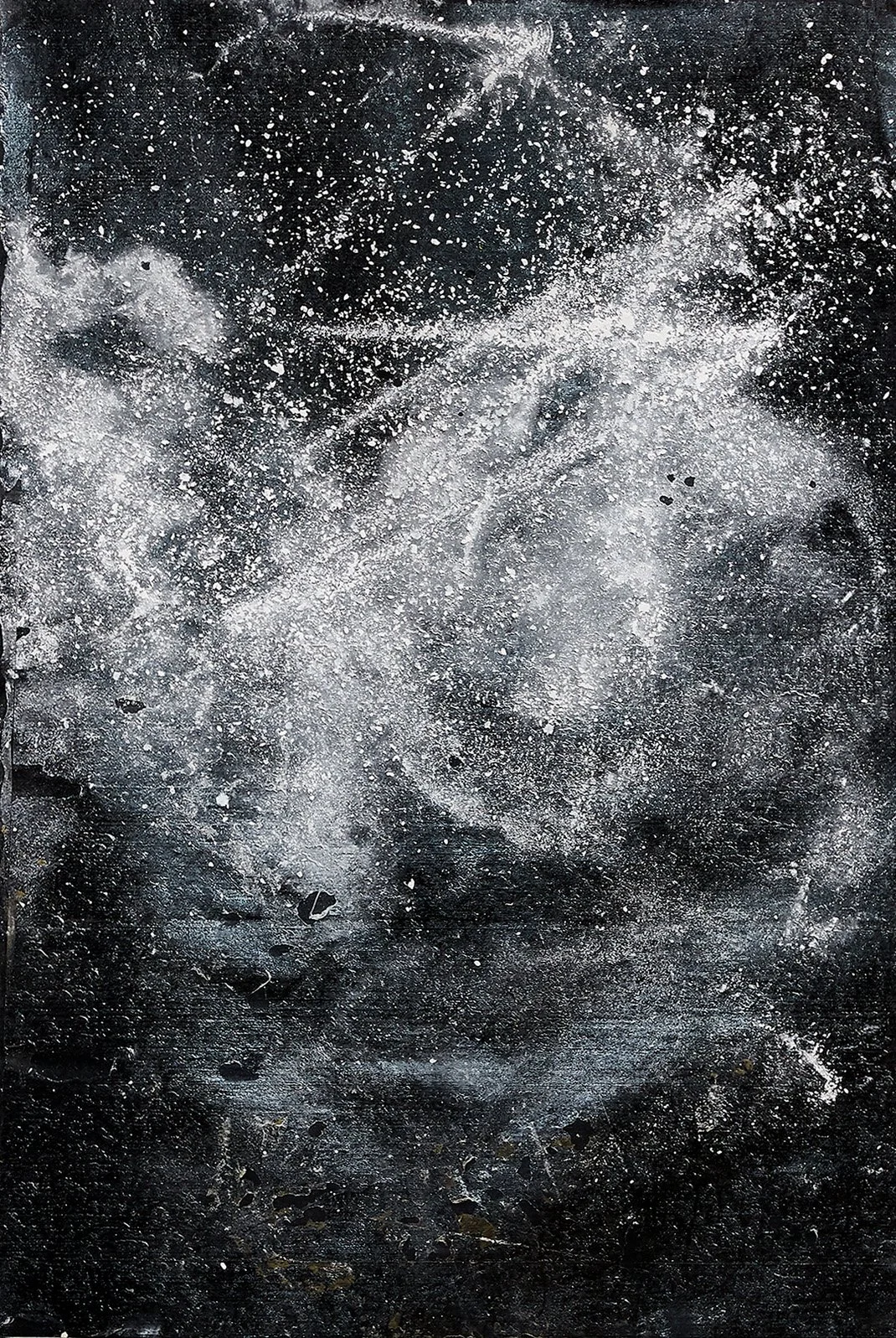FREE BODY
Jeffrey Meris
September 30th 2021 - November 6th 2021
Free Body is a state of somatic, material or spiritual liberation. This exhibition asks us to imagine outside the corporeal; how do we imagine beyond the skin and into the spiritual? In this presentation, Meris examines his own body by investigating ideas of subjectivity, emancipation and repair through the reimagining of materials in two separate series of drawings and paintings: I, Used to Be and Other body. Abstraction functions as an important reference point in Free Body, pointing to both Edouard Glissant’s theory of the “right to opacity” in his 1990 Poetics of Relations and the artist’s own interest in abstraction as “being the space of the radical unknown.” Materials and aesthetic tactics are at once coded and disrupt ideas of universality. In this exhibition, particularly the painterly works meant to read as skinlike, bodily or leather refer to goatskin drums, objects of sacred cultural significance in the Bahamas and African Diasporic cultures which often are untranslatable outside of its cultural context. Following Glissantian theory, Free Body pushes towards the notion that operating as the other is a generative space in and of itself.
The drawings in I, Used to Be bring the viewer to a cosmic space, greater than yet still familiar. The works show a starry scene, white specks of plaster dust caught on large sheets of dark black paper. The plaster particles come from the remnants of the artist’s previous series of plaster casts and kinetic sculptures titled Now You See Me; Now You Don’t. This dust is affixed to the roofing paper by gravity and double sided tape. The use of asphalt roofing paper is particularly personal and potent, an ominous material that harkens back to Meris’ childhood in the Bahamas—bringing forth memories of hurricane-battered homes covered in the same material summer after summer. These drawings are a retelling of the earlier plaster body-casts where Meris in a Duchampian gesture takes the nude and allows it to descend the staircase into abstraction.
Likewise, in Other Body, Meris transforms cotton clothing to restore rusted steel using acetic acid to create abstracted worlds. These paintings resemble both hyde, skin, and fire. These works not only materialize through chemical reaction, but also speaks to the transformation of material in relationship to care. Meris uses the tarnishing of iron as a metaphor to psychological degradation, both being ecological manifestations of external stimuli. A certain healing is needed for both a world where racialized violence is perpetrated by the state and ferrous metal is corroded by environmental impurities.
Other Body follows Meris’ recent interest in self care which fosters ideas of maintenance, healing, and futurity.
By reimaging plaster dust as drawings and repairing rusted steel with cloth, Meris presents a ghost of the body. The traces and the imprints shared in these works echoes what once was and what could become. A transformation from mundane to sublime constitutes Free Body.
Other (body) I, 2021 Iron rust and acetic acid on terry rags, stainless steel snaps, poplar, chrome polished aluminum 60” x 40”
Other (body) II, 2021 Iron rust and acetic acid on terry rags, stainless steel snaps, poplar, chrome polished aluminum 60” x 40”
Other (body) III, 2021 Iron rust and acetic acid on terry rags, stainless steel snaps, poplar, chrome polished aluminum 60” x 40”
Other (body) IV, 2021 Iron rust and acetic acid on terry rags, stainless steel snaps, poplar, chrome polished aluminum 60” x 40”
Other (body) V, 2021 Iron rust and acetic acid on terry rags, stainless steel snaps, poplar, chrome polished aluminum 60” x 40”
Thicker than Water, 2021 Iron rust and acetic acid on terry rags, stainless steel snaps, poplar, aluminum 74” x 42”
First Aid (Study), 2021 Painting, iron rust and acetic acid on terry rags, stainless steel snaps, poplar, chrome polished aluminum 32” x 36 ”
Levi (Study), 2021 Painting, iron rust and acetic acid on terry rags, stainless steel snaps, poplar, chrome polished aluminum 32” x 36 ”
I, Used To Be XIII, 2021 Plaster particles on roofing paper, double sided adhesive tape 81” x 38” x 2”
I, Used To Be XIV, 2021 Plaster particles on roofing paper, double sided adhesive tape 81” x 38” x 2”
I, Used To Be XIX, 2021 Plaster particles on roofing paper, double sided adhesive tape 81” x 38” x 2”
I, Used To Be XV, 2021 Plaster particles on roofing paper, double sided adhesive tape 81” x 38” x 2”
I, Used To Be XVI, 2021 Plaster particles on roofing paper, double sided adhesive tape 81” x 38” x 2”
I, Used To Be XVII, 2021 Plaster particles on roofing paper, double sided adhesive tape 81” x 38” x 2”
I, Used To Be XVIII, 2021 Plaster particles on roofing paper, double sided adhesive tape 81” x 38” x 2”
Study III, 2021 Plaster particles on roofing paper, double sided adhesive tape 24” x 36”
Study IV, 2021 Plaster particles on roofing paper, double sided adhesive tape 24” x 36”
Study V, 2021 Plaster particles on roofing paper, double sided adhesive tape 24” x 36”
Study VI, 2021 Plaster particles on roofing paper, double sided adhesive tape 24” x 36”
Study III, 2021 Plaster particles on roofing paper, double sided adhesive tape 24” x 36”


